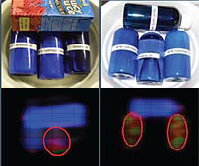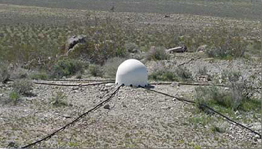Finding a collection of slightly different needles in a haystack of human DNA. This slightly inadequate analogy characterizes the problem of discovering novel, heretofore unknown or uncharacterized pathogens in a human blood or tissue sample. With the vast majority of DNA from such a sample being of human origin, Sandia National Laboratories’ RapTOR (Rapid Threat Organism Recognition) LDRD is pursuing an automated method of eliminating or minimizing the effect of this human DNA, in order to use existing molecular biology methods, such as ultrahigh-throughput DNA sequencing (UHTS) to characterize the DNA of these new pathogens. Such pathogens may arise from genetic engineering of existing threat organisms, or like Ebolavirus, when initially found, may be newly discovered pathogenic agents. In any case, using an older technology known as hydroxyapatite chromatography, the RapTOR LDRD has been microfluidically automating a process known as “normalization,” which removes abundant human DNA sequences, so that less numerous DNA of potential pathogens can be sequenced.
Read more: RapTOR Being Adapted



















